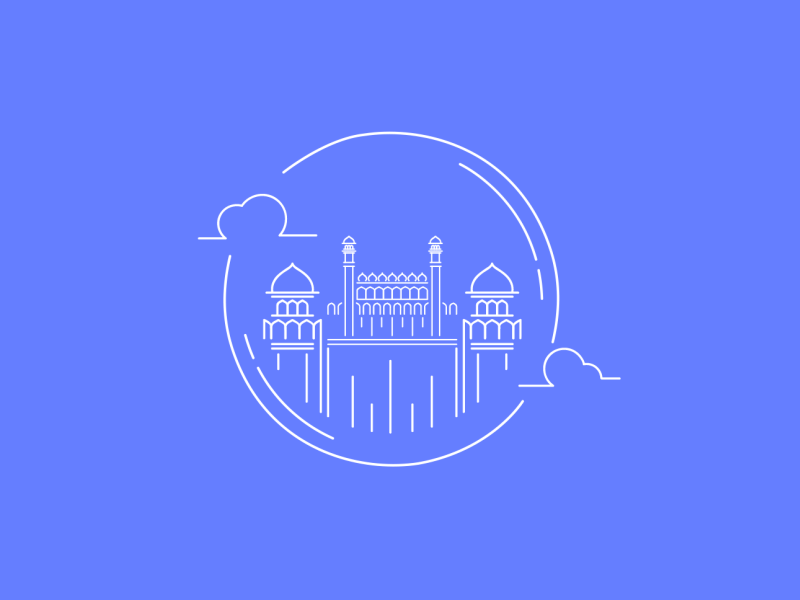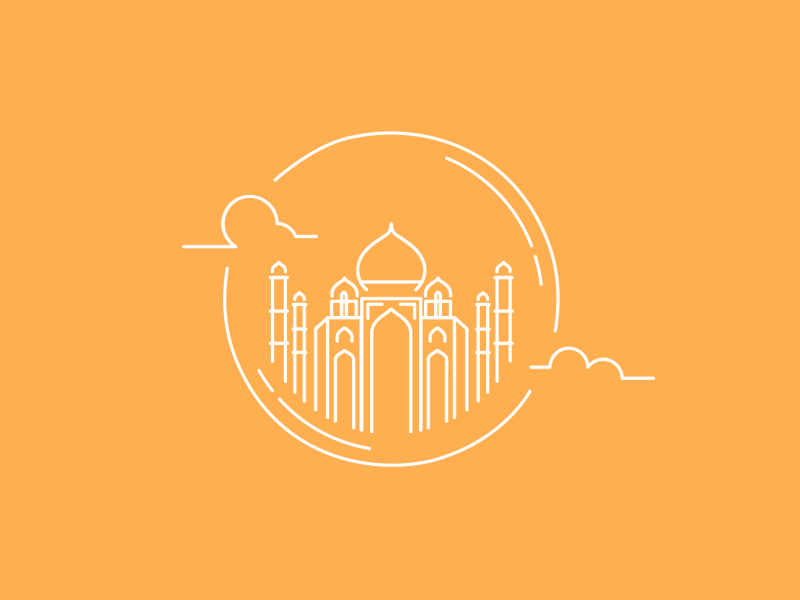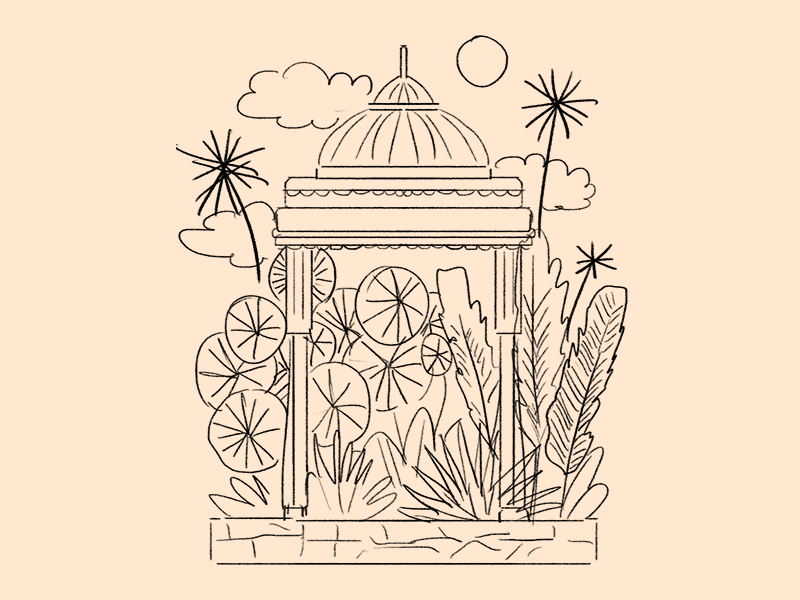Intermediate Volunteering Program
7 Days Level 2 Certificate
$1500 REGISTER NOW

Places you will visit
Delhi NCR
Haridwar
Rishikesh
Mussoorie
Agra (Taj Mahal)
Inclusions

Food

Accommodation

Transport

Distribution
Exclusions

Currency Exchange

Travel Insurance
.png)
Tickets

Visa
DAY 1
Delhi - Orientation and Workshop
DAY 2
Delhi and NCR Field Activity 1 & Street Play
DAY 3
Delhi – Agra (Taj Mahal) – Delhi
DAY 4
Field Activity 2 in Slum + Distribution of Relief Material + Interaction with Beneficiaries
DAY 5
Delhi - Haridwar Field Activity 3 – Rishikesh
DAY 6
Rishikesh- Mussoorie – Rishikesh
DAY 7
Felicitation – Sightseeing – Free Time – Departure
Inclusions
- Accommodation in 4/5 Star
- Food
- All Transportation in India. Including Airport Transfers
- Workshop + Training
- Field Activities with Local Police, Volunteers & Professionals
- Street Play Activities with India's renowned Asmita Theater group.
- Distribution of Educational and Relief Material to Beneficiaries
- Certificate + Detailed Report of the Program
- Interaction with Parliamentarians / Ministers
- Insight into the Significance of Cultural/Traditional Practices
- Local Sightseeing
Exclusions
- Air Tickets
- Visa
- Travel Insurance
- Currency Exchange
About Places You Will Visit

Delhi
Delhi is a city of wonders. It is the capital city of India and has been the seat of power since India’s independence. Delhi, also known as Dilli, is a modern city but can also be understood through its long and vibrant history. One who has experienced Delhi is said to have experienced all of India, as the city is a melting pot of the nation’s various cultures and people. It is said to represent the nation’s heart, hence earning the name “Dilwalon ki Dilli”. It served as the capital of the Mughal Empire for the Later Mughals, where Red Fort was the royal residence. They built the iconic bazaar known as Chandni Chowk, which serves as a food and cultural hub today. Its famous Paranthe Wali Gali is an entire lane with a series of shops selling only paranthas. Delhi’s Jama Masjid is one of Asia’s largest Mosques. Delhi was also the capital during the latter half of the British Raj. During this time, the Rashtrapati Bhavan was constructed, which today is the largest residence of any Head of State. Modern-day New Delhi was designed by British architects Sir Edwin Lutyens and Sir Herbert Baker. Hence, it is also known as Lutyens Delhi. Qutb Minar, the world’s tallest brick minaret and Humayun’s tomb are UNESCO world heritage sites within Delhi. Delhi’s Akshardham temple is one of the world’s largest temple complexes on the planet. Delhi is the second-most populous city in the world, after Tokyo. Despite the pollution levels, it is one of the greenest cities globally, and entire public transport runs on CNG. Delhi’s Spice market is Asia’s largest. Delhi’s Azadpur Mandi is Asia's largest wholesale market for fruits and vegetables. Delhi also features iconic gardens such as the Lodhi Gardens and Waste to Wonder Park.

Agra
Agra, a city situated along the banks of river Yamuna, boasts one of the seven wonders of the world, the iconic Taj Mahal. Made of white marble, it is the mausoleum Shah Jahan made for his wife, Mumtaz Mahal. Braving the test of time in Agra are the Agra Fort and Fatehpur Sikri, both UNESCO world heritage sites. The majestic Agra Fort is made of red sandstone and was the residence of Mughal emperors. Once a town itself, Fatehpur Sikri includes Buland Darwaza (a giant gate), Tomb of the Sufi saint Salim Christi, Ibadat Khana (house of worship) other places of importance. Tombs of emperor Akbar the Great and his wife are some other landmarks. Apart from historical locations, Agra has colourful and vibrant bazaars. Agra was the seat of power for the Early Mughals under the Mughal Empire. Today, it is the fourth most populous city in India’s most populous state, Uttar Pradesh. Mughal gardens in Agra offer much-sought recreation and nature therapy. They are being preserved and developed to protect their grandeur and flora and fauna. Agra’s food delicacies, to name a few, are Petha, a sweet dish that comes in several flavours and Mughlai cuisine. Agra continues to carry the traditions of intricate marble crafts like Pietra Dura (a type of decorative art) and marble stone inlays. Representing India’s unity in diversity, Agra is home to Mankameshwar temple, Jama Mosque and Guru ka Taal, all significant religious places. Mankameshwar is a Hindu temple, Jama Mosque a Muslim place of worship, while Guru Ka Taal is an important pilgrimage destination for Sikhs. A visit to Agra leaves you in awe of India’s history, heritage and culture, alongside providing a great diversion from the daily hustle. No wonder the city continues to enthral tourists even after hundreds of years of existence.

Rishikesh
Situated at the foothills, by the banks of Ganga,Rishikesh is a city in the state of Uttarakhand. Rishikesh is known as the “Yoga Capital of the World”. Many tourists flock here to learn the art of yoga and meditation and become certified yoga teachers. Rishikesh is home to several ashrams and wellness centres, including the famous Beatles Ashram or Guru Maharishi Mahesh Yogi Ashram. The legendary band stayed and received their spiritual training. Triveni Ghat is one of the famous bathing spots in Rishikesh, which takes a life of its own at the evening Aarti. Lights, the sound of drums and chanting, the entire ghat lit with a flickering lamp add to the moment’s beauty. The most iconic structure in Rishikesh is the Lakshman Jhula, providing a clear view of the city banks and the newly constructed building of Gita Bhawan. Rishikesh is the quintessential haven for adventure lovers. Rishikesh is famous for the ultimate river rafting experience in the white-water rapids. If you want to experience flying like a bird, Mohanchatti is your place to try Bungee jumping. If Trekking excites you, Waterfall Trek in Rishikesh is just the right place offering natural views. The Kunjapuri trek is another trail that offers mesmerising views of snow-covered mountains. Rishikesh also provides adventurers with cliff jumping spots, kayaking, hot air balloon rides. Another famous sport is the Giant Swing which will enable you to swing through the air over lush valleys. This swing is claimed to be the highest in India, at the height of 83m. Rishikesh is one of the few places that offers a Zipline tour and paragliding. Located in the foothills of the Himalayas, Rishikesh offers mountain climbing as one of its most famous-sport activities.

Haridwar
Haridwar or the “Gateway to Gods" is one of the holiest pilgrimages in Hinduism. It is located in the state of Uttarakhand, by the banks of river Ganga, considered the most sacred river in India. Situated on the foothills of the Himalayas, is a beautiful city full of temples and ashrams. It is also famous for its ghats, where thousands of devotees bathe to wash away their sins in the holy waters of Ganga and attain salvation. also hosts one of the world’s biggest gatherings every 12 years, the Kumbha Melas. It is the birthplace and home to many institutions that use traditional healing and Ayurvedic methods. Ashrams in offer a lifestyle that heals one’s mind and soul. The city offers traditional ayurvedic treatment and learnings in the spiritual art of Yoga and Meditation. One of the scenic beauties of is the Ganga Aarti. At Har ki Paudi ghat, thousands of devotees gather to witness this magnificent moment. The flickering lamps with flowers floating on the river, bell sounds, and hymns’ recitation make the atmosphere extremely sacred. Apart from its spirituality, is also known for its adventurous side. One can participate in various adventurous activities like trekking, bird watching, and river rafting. Neel Dhara Pakshi Vihar is a treat for nature lovers and bird watchers; this forested area offers abundant flora-fauna. The best part of is the Jungle Safari at Rajaji National Park, which has the largest population of elephants. has one of the best bazaars worth exploring for its street food dishes such as kachoris, samosas, almond milk and lip-smacking jalebis. has it all - a city for nature-lovers that gives a captivating overview of Indian traditions and civilisation. - Piran Kaliyar dargah

Mussoorie
Mussoorie is a hill station in Uttarakhand, situated amidst the mountain ranges of the Himalayas. It is called the “Queen of Hill Stations''. It is the ideal place for camping, sightseeing and stargazing. A few of the most attractive waterfalls in Mussoorie are Kempty, Mossy, Bhatta, and Jharipani. For adventure enthusiasts, Mussoorie offers a variety of activities such as a thrilling skywalk, river rafting, rock climbing, mountain biking, zip-lining and paragliding over the lakes. Mussoorie Lake is a manmade lake known for its recreational activities. Mall Road in Mussoorie gives a typical hill station experience – long strolls, cafes, shopping. The Mussourie library is another major tourist attraction, which dates back to 1843! Mussoorie also houses luxury resorts and hotels. The Benog Wildlife Sanctuary is an abode to several species of rare plants, birds and animals. It is a dream spot for birdwatchers. George Everest House near the mall road is a camping and trekking site and the home of Sir George Everest, a surveyor-general of India. A museum is now being developed in the same. Tibetan Temple in the Happy Valley is a Buddhist Spiritual site. It is said that the Dalai Lama took shelter here while escaping Tibet. Happy Valley is also called mini-Tibet as it is home to 5000 Tibetan refugees. The hilltops views are probably the best part of Mussourie. Lal Tibba provides the best sunrise and sunset views. Gun hill, the second highest peak in Mussourie, is the most famous viewpoint overlooking the valleys. The Camel Back Road, getting its name from the shape, provides a beautiful walk in the valley, making you feel like you are walking amongst the clouds. Mussourie has something for everyone – nature lovers, bookworms, wildlife explorers, romantics, kids and the YOLO tribe.






Volunteer Certificate Program
---------------------->
DAY 1 Delhi - Orientation and Workshop
DAY 2 Delhi and NCR Field Activity 1 & Street Play
---->
---->
---->
---->
DAY 3 Delhi- Agra (Taj Mahal) – Delhi
DAY 4 Field Activity 2 in Slum + Distribution + Interaction
DAY 5 Felicitation – Sightseeing – Free Time - Departure
----------------->






Basic Certificate Program
---------------------->
DAY 1 Delhi - Orientation and Workshop
DAY 2 Delhi and NCR Field Activity 1 & Street Play
---->
---->
---->
---->
DAY 3 Delhi- Agra (Taj Mahal) – Delhi
DAY 4 Field Activity 2 in Slum + Distribution + Interaction
---->
---->
DAY 5 Delhi - Haridwar Field Activity 3 – Rishikesh
---->
---->
---->
---->
DAY 6 Rishikesh - Mussoorie - Delhi
DAY 7Felicitation – Sightseeing – Free Time - Departure
-------------->
Book now






Punjab Special Certificate Program
---------------------->
DAY 1 Delhi - Orientation and Workshop
DAY 2 Delhi and NCR Field Activity 1 & Street Play
---->
---->
---->
---->
DAY 3 Delhi- Agra (Taj Mahal) – Delhi
DAY 4 Field Activity 2 in Slum + Distribution + Interaction
DAY 5 Field Activity 3 in Slum + Workshop + Sightseeing
---->
---->
DAY 6Delhi – Amritsar Field Activity 4 & Golden Temple
---->
---->
DAY 7DAY 7 Amritsar Golden Temple Morning Visit- Delhi
DAY 8Field Activity 5 in Slum + Workshop
DAY 9Felicitation – Sightseeing – Free Time - Departure
-------------->
Book now






Intermediate Certificate Program
---------------------->
DAY 1 Delhi - Orientation and Workshop
DAY 2 Delhi and NCR Field Activity 1 & Street Play
---->
---->
---->
---->
DAY 3 Delhi- Agra (Taj Mahal) – Delhi
DAY 4 Field Activity 2 in Slum + Distribution + Interaction
---->
---->
DAY 5 Delhi - Haridwar Field Activity 3 in Slum – Rishikesh
---->
---->
---->
---->
DAY 6 Rishikesh- Mussoorie – DelhiRishikesh- Mussoorie – Delhi
DAY 7 Field Activity 4 + Workshop + Sightseeing
---->
---->
DAY 8 Delhi – Amritsar – Night Visit Golden Temple
---->
---->
DAY 9 Amritsar Golden Temple Morning Visit- Delhi
DAY 10 Delhi Field Activity 5 + Workshop + Sightseeing
DAY 11 Felicitation – Sightseeing – Free Time - Departure
-------------->
Book now






Advance Certificate Program
---------------------->
DAY 1 Delhi - Orientation and Workshop
DAY 2 Delhi and NCR Field Activity 1 & Street Play
---->
---->
---->
---->
DAY 3 Delhi- Agra (Taj Mahal) – Delhi
DAY 4 Field Activity 2 in Slum + Distribution + Interaction
---->
---->
DAY 5 Delhi - Haridwar Field Activity 3 in Slum – Rishikesh
---->
---->
---->
---->
DAY 6 Rishikesh- Mussoorie – Rishikesh
---->
---->
---->
---->
DAY 7 Rishikesh – Chandigarh Field Activity 4 – Amritsar
---->
---->
DAY 8 Amritsar Golden Temple Morning Visit- Delhi
DAY 9 Delhi Field Activity 5 + Workshop + Sightseeing
DAY 10 Field Activity 6 + Workshop + Sightseeing
---->
---->
DAY 11 Delhi – Jaipur Field Activity 7 In village +Sightseeing
---->
---->
DAY 12 Jaipur Sightseeing – Dinner at Kingdom of Dreams
DAY 13 Delhi Field Activity 8 in Slum + Workshop
DAY 14 Free Day
DAY 15 Field Activity 9 in Slum + Workshop
DAY 16 Felicitation – Sightseeing – Free Time – Departure
Book now
Master Certificate Program
Important – Please read the terms and conditions before booking
- 30 Days Tour
- Master Certicate Program(Level - 5)
- Cost - USD 5000
- DAY 1 Delhi - Orientation and Workshop
- DAY 2 Delhi and NCR Field Activity 1 & Street Play
- DAY 3 Field Activity 2 in Slum + Distribution – Interaction
- DAY 4 Delhi- Agra (Taj Mahal) – Delhi
- DAY 5 Delhi Field Activity 3 + Workshop + Sightseeing
- DAY 6 Field Activity 4 in Slum + Workshop + Sightseeing
- DAY 7 Delhi Field Activity 5+ Workshop + Sightseeing
- DAY 8 Delhi - Haridwar Field Activity 6 in Slum – Rishikesh
- DAY 9 Haridwar Field Activity 7 + Sightseeing
- DAY 10 Rishikesh- Mussoorie – Rishikesh
- DAY 11 Rishikesh– Delhi
- DAY 12 Delhi Field Activity 8 + Workshop + Sightseeing
- DAY 13 Field Activity 9 in Slum + Workshop + Sightseeing
- DAY 14 Delhi Field Activity 10 + Workshop + Sightseeing
- DAY 15 Delhi - Chandigarh Field Activity 11 & Golden Temple (Night)
- DAY 16 Amritsar Field Activity 12 + Sightseeing
- DAY 17 Amritsar Golden Temple Morning Visit- Delhi
- DAY 18 Delhi Field Activity 13 + Workshop + Sightseeing
- DAY 19 Field Activity 14 in Slum + Workshop + Sightseeing
- DAY 20 Delhi Field Activity 15 + Workshop + Sightseeing
- DAY 21 Delhi – Jaipur Field Activity 16 in village + Sightseeing
- DAY 22 Jaipur Field Activity 17 + Sightseeing
- DAY 23 Jaipur Sightseeing - Delhi
- DAY 24 Delhi Field Activity 18 + Workshop + Sightseeing
- DAY 25 Field Activity 19 in Slum + Workshop + Sightseeing
- DAY 26 Delhi Field Activity 20 + Dinner at Kingdom of Dreams
- DAY 27 Delhi Field Activity 21 + Workshop
- DAY 28 Free Day
- DAY 29 Field Activity 22 in Slum + Workshop
- DAY 30 Felicitation – Sightseeing – Free Time – Departure
























